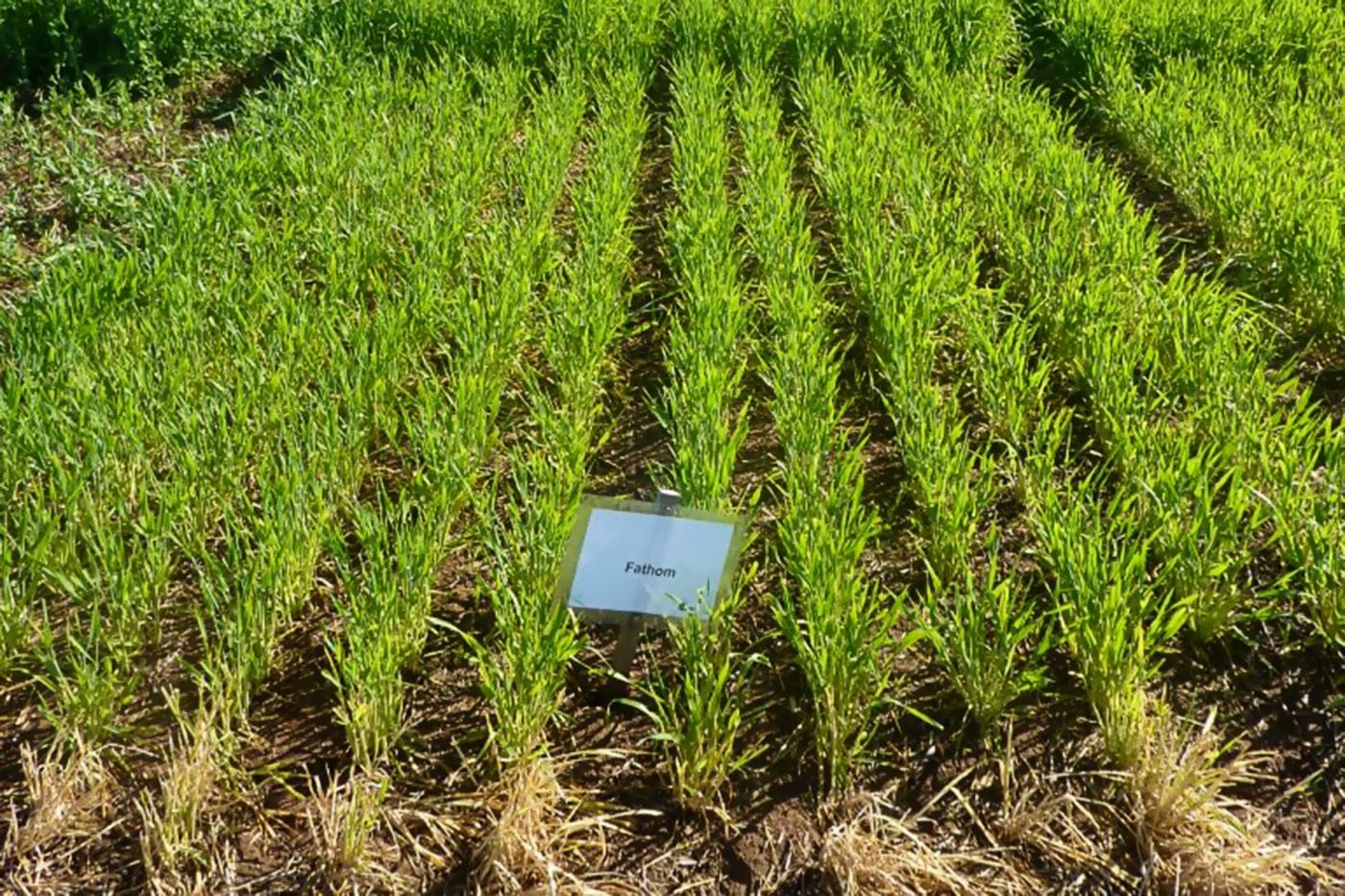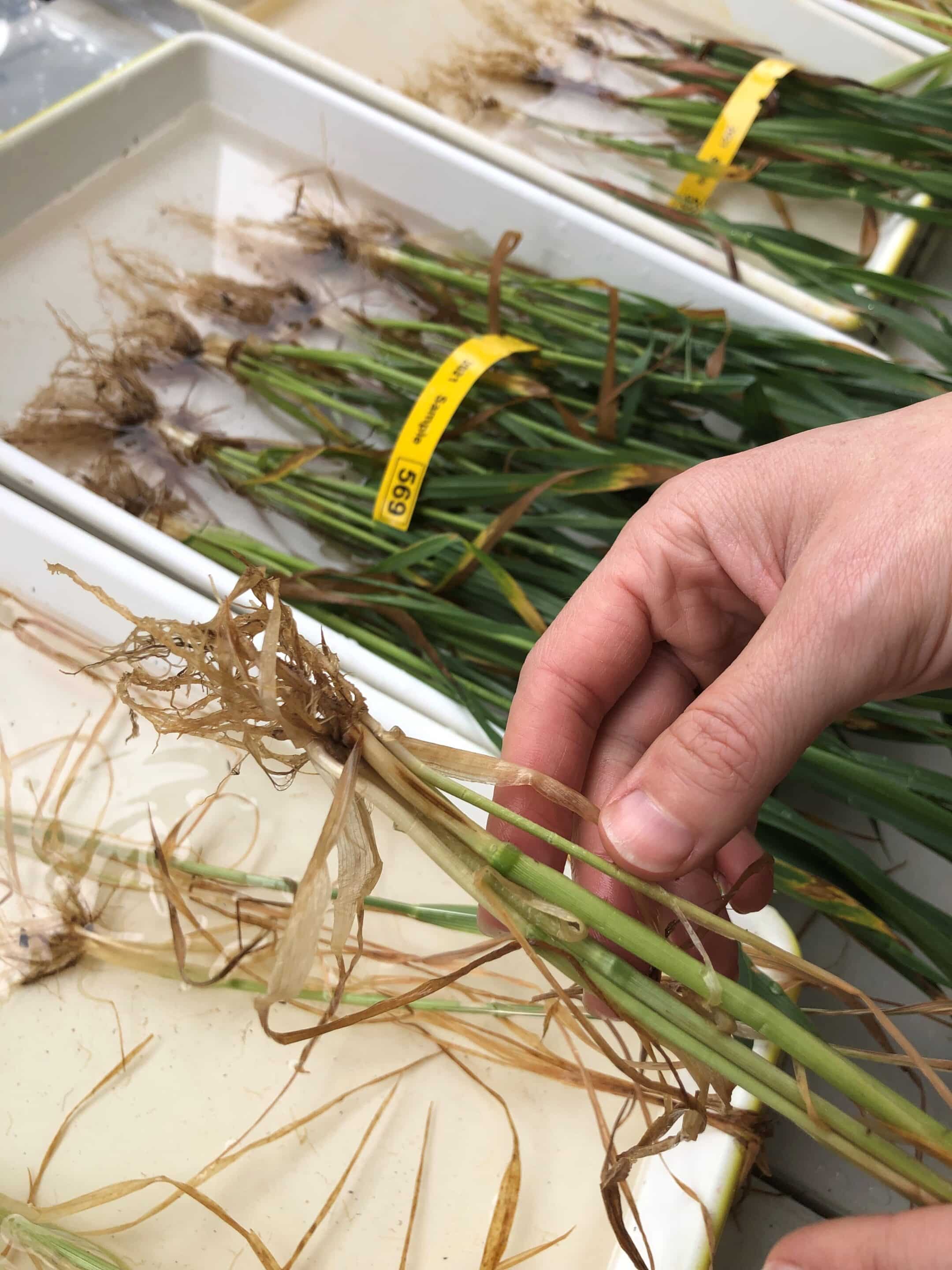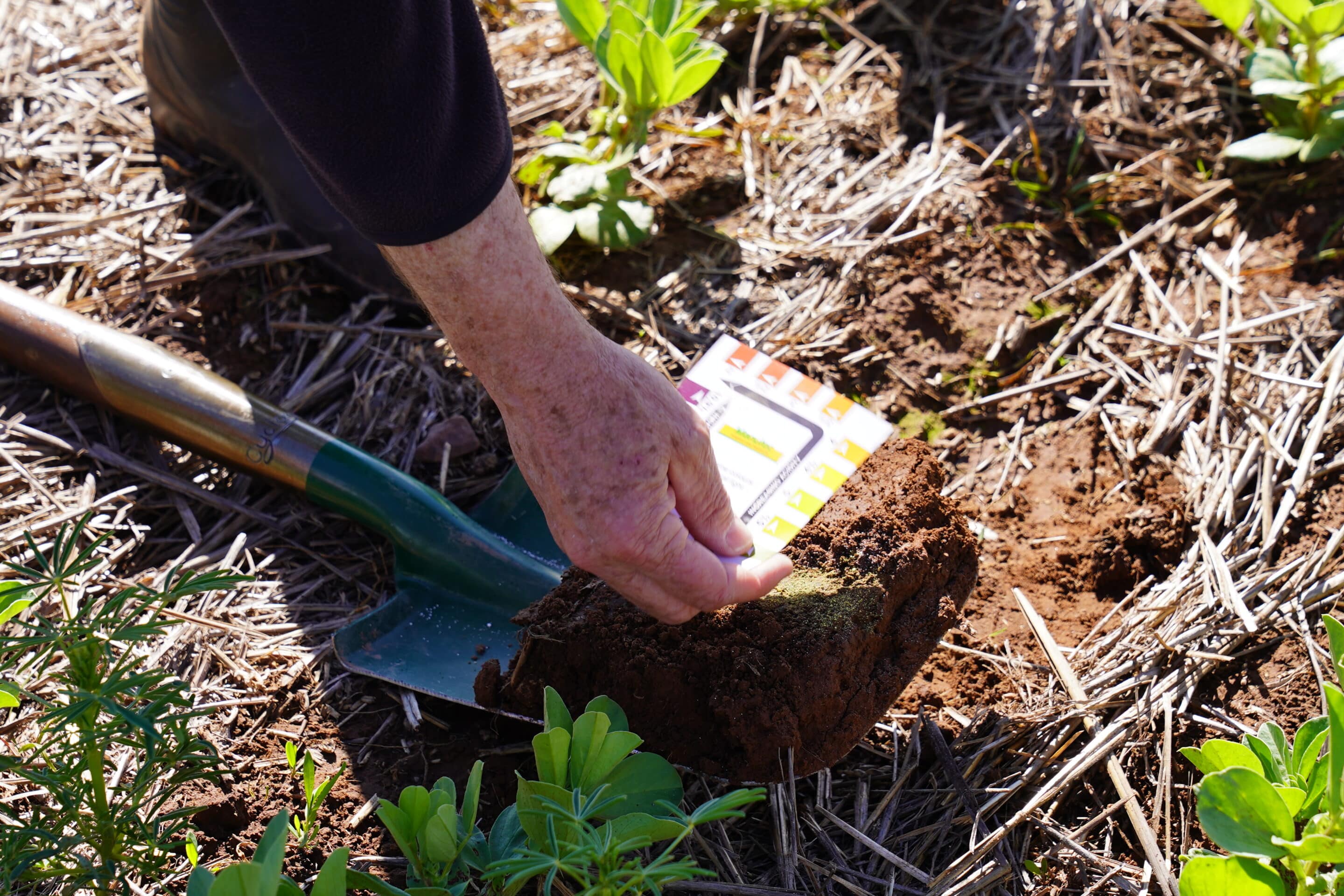START
FINISH

Summary
Growers can increase the value and marketability of downgraded cereal grain by selling based on its nutritive characteristics, rather than its receival grade.
Background
As the growing seasons across southern Australia appear to be shortening in line with changing climate, the ability to finish livestock to a saleable weight is becoming increasingly challenging without grain supplementation. Feed grain demand is predicted to increase and livestock managers will need to become more astute in sourcing grain based on the predicted value to livestock productivity rather than purely on a $/t basis. There is an opportunity for growers to capitalise on this growth area by marketing grain on its nutritive value.
The ability to increase marketing opportunities for downgraded grain which may not be of lesser value to the livestock industry is of particular value to grain growers.
Research Aims
- Determine the nutritive value (NV) of a range of feed grains to livestock and the economic value, based on NV, to grain growers and livestock managers.
- Measure the variation in NV of a range of feed grains of the same variety grown under different environmental conditions across seasons.
- Determine the economic value of downgraded grain to grain growers and livestock managers.
- Apply a range of treatments to determine the potential and economics of using agronomy to manipulate crude protein and metabolisable energy levels in a range of feed grain varieties.
- Identify potential opportunities for marketing grain based on its nutritive value.
In The Field
About 520 cereal grain samples were collected annually, analysed and their nutritive value compared for each of the 2010, 2011 and 2012 seasons. Samples were sourced from National Variety Trial (NVT) sites, the SARDI oat breeding program and the Hart Field Site and included eight or more varieties each season of oats, barley, triticale and wheat.
Test weight and screenings were collected to determine which samples would have been downgraded due to these quality parameters.
A dollar value of the grain based on receival grade was compared to the value calculated based on nutritive value.
Samples were analysed across all parameters to determine if trends in nutritive value and quality existed and whether they were influenced by fertiliser application or other environmental factors.
Results
Significant variations across variety, site, season and species were found for all nutritive characteristics although there was no effect of agronomic treatments within each site. These characteristics include crude protein, metabolisable energy, starch concentration and neutral detergent fibre. This highlights the importance of testing grain for nutritive value, rather than using industry averages, to enable grain to be sold on this basis.
When a dollar value was assigned to all downgraded grain samples based on their potential value to livestock producers, the potential annual financial benefit to growers nationally was $105 million to $212 million. The average benefit across the seasons was $27/t for oats, $19/t for barley, $25/t for triticale and $17/t for wheat.
A grain value calculator is being developed for online use which will enable growers to value their own grain should they decide to use this marketing option.
Project Participants
Productive Nutrition: San Jolly
The Problem
Without alternative marketing opportunities, growers face varying degrees of financial loss due to downgraded cereal grain that fails to meet intended market specifications.
The research
Productive Nutrition Pty Ltd investigated the opportunity to gain increased returns to growers by providing another marketing opportunity for feed grains to livestock industries.
More information
San Jolly, Productive Nutrition Pty Ltd
T: 08 8842 3192
E: [email protected]
Value for Growers
- Increased returns per hectare for downgraded grains are possible by marketing grain to livestock producers based on nutritive value.
- Increased marketing opportunities has the potential to forward contract grain to livestock producers, particularly oats.
- Identification of feed grains and specific varieties with improved nutritive values can provide growers with greater flexibility in selecting varieties suited to their market needs.
- Current analyses for nutritive value of grain ranges from $45 to $65 (ex GST).
- Improved access to appropriate feed grains of specified nutritive value can give livestock producers greater confidence to move stock into containment areas for managed feeding.



